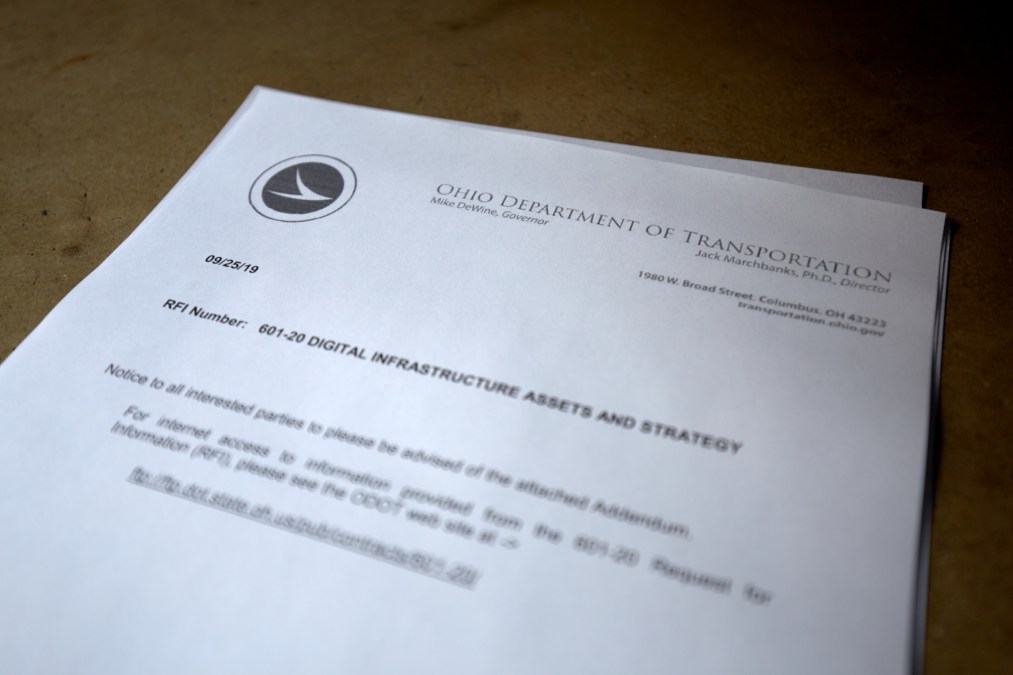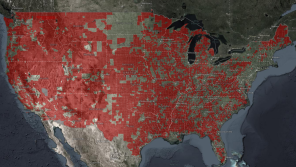Ohio releases broadband report, priming statewide strategy

After considering input from 24 national and local wireless providers this summer, Ohio’s government modernization office is ready to begin crafting a statewide broadband strategy to bring high-speed internet to the state’s 300,000 unserved homes.
The state’s InnovateOhio office, led by Lt. Gov. Jon Husted, partnered with the Ohio Department of Transportation to release a statewide broadband report on Tuesday that outlined potential challenges and a list of connectivity goals for the state to accomplish while it develops a strategy. The report is based off a request for information that the state filed in June, which garnered responses from 24 wireless carriers. Accomplishing the goals — to bring broadband to rural communities, build connected and autonomous vehicle-friendly roadways and ultimately fund a stronger network across the state — will require partnership with private carriers, Husted said.
While the report considered the broadband strategies of other states, the key finding of the report released Tuesday, according to the governor’s office, is that there is “no silver bullet” or one-size-fits-all solution to expanding broadband throughout the state.
“I’m not sure any state has found the magical solution for extending broadband and high-speed internet to rural areas that don’t have it,” Husted told StateScoop. “The reason is simply financial. If a business can make a business case for putting the infrastructure in place they do, and if they can’t, they don’t. What we’re trying to figure out is how to use existing assets that we have to entice, encourage and generate revenue for the extension of broadband that don’t have it.”
The report showed that multiple carriers, including AT&T and Cincinatti Bell, have invested at least $1 billion in fiber networks over the last decade. The report also says promising partnerships have been formed within the state between carriers and technology companies, such as Agile Networks and Microsoft’s Airband initiative.
Perhaps the biggest positive for state officials outlined in the report is that 15 carriers expressed interest in the accessing public space alongside highways that could be used to lay down fiber. ODOT owns the right-of-way in many of those locations, but the agency could sell access to finance broadband expansion, Husted said.
Challenges remain, however. Chief among them is connecting the 1 million people that lack broadband access in the state. Husted said that Ohio has missed out on federal funding to expand broadband access from the FCC’s Connect America Fund because it did not have a broadband strategy. The FCC has been scrutinized over the past year for a failure to properly examine which parts of the country are suffering the most from a lack of broadband access, and Husted said he wants to prove that funding would be put to good use in Ohio. The carriers that responded to the RFI also lamented outdated tax codes that inhibit public-private partnerships within the state.
The process of drafting the report included a committee of agency officials reviewing responses to the RFI, released in June as an inquiry into how the state could expand broadband access. The review committee included officials from Gov. Mike DeWine’s office, ODOT, the state’s job-creation office, the Department of Administrative Services and the Ohio Turnpike Commission, among others. The committee also conducted follow-up interviews with eight of the 24 carriers that responded to the initial survey.
A final broadband strategy is expected to be completed in early 2020.






